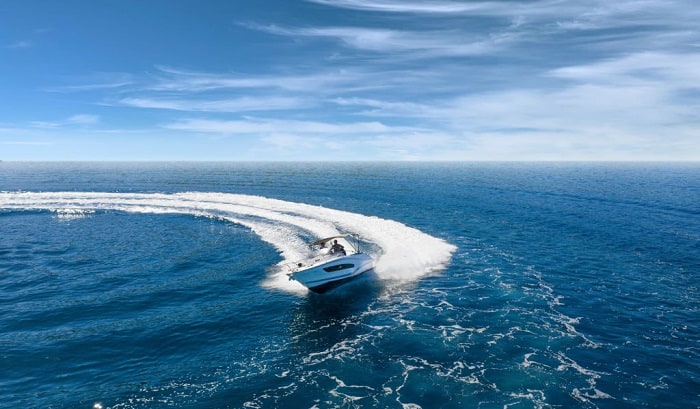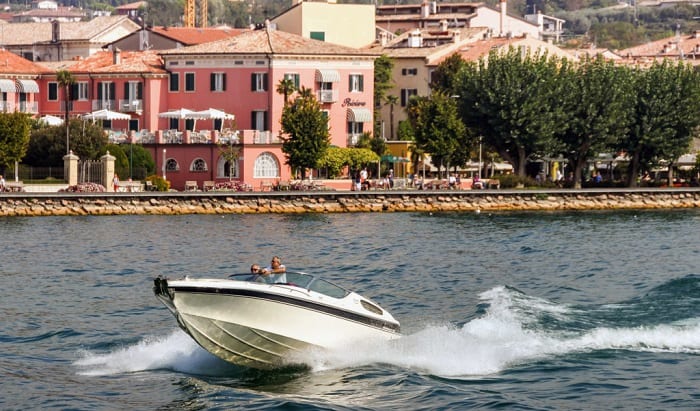What is a safe speed for your boat? This is an important question for every boat operator who is concerned about the safety of everyone on board. It’s the speed that allows you to have proper handling and effective action to prevent collisions and accidents. The safe speed also allows you to stop at the right time within a distance conducive to the present conditions and circumstances.
Note that there are other factors associated with safe speed. Some of them are traffic density, account visibility of the operator, and proximity of navigational hazards. Nevertheless, there’s a lot more to know in this article.
Table of Contents
What Determines if a Speed is Safe for Your Boat
COLRegs made Rule 6 for safe speed which entails every boater operate carefully to prevent accidents. To help you attain this goal, you have to determine a safe speed to travel based on the following factors:
State of VisibilityIt’s
Necessary to slow down when moving through fog, mist, snow, rain, smoke, and glare. Other things also inhibit you from seeing the ‘big picture’ ahead like bridges, piers, causeways, and river bends.
Apart from darkness, steering directly into the sunlight can alter visibility and your judgment on distance. You must also take care of the windscreen properly by not using a spray that can form build-ups.
Spray build-up can be hazardous in the darkness or the presence of glare. Instead, choose a cleaner with a safe formula like 303 Marine, MEGUIAR, Star Brite, and Boat Bling.
Traffic Density
It’s a big ‘NO’ to move at high speed in areas with high traffic density. Remember that you can pull off the right decision when you’re at a safe speed. It won’t only keep nearby vessels safe but also the approaching ones.
Slow down when you’re near moored craft, workboats, and larger vessels. Be extra careful when passing through a narrow channel. Commercial vessels usually display special signals that you need to pay attention to.
The mobility of larger ones is restricted. So, better take the initiative to be in the safe zone as clashing with them is more disadvantageous on the part of a smaller boat.
The Maneuverability of the Boat
Take note that what you should check to decide if a speed is safe for your boat includes this factor. The distance that is essential to make turns and stop is linked to this factor. Aside from speed, the maneuverability of your boat is affected by the vessel’s design, current, and wind as well.
These refer to unlit or unmarked things like lights, buoys, and signs that are damaged or moved from the designated place.
Heavy Seas
You have to observe the wind and sea as changes happen at any time. Thus, it’s better to slow down so you can easily handle your boat if something comes up. Sudden occurrences like airborne fatigue and pounding have negative effects. They won’t only cause body aches or pains because the drawbacks can be worse like injuries.
Safe Speed is Essential in Shallow Water
When you’re on shallow water, be aware that the bottom of your boat affects the boat’s movements. You need to slow down as the stern tends to squat, which results in getting close to the bottom of the water.
The stern can cause another concern called ‘bank suction’. It happens when the stern moves closer to the bank with interference from the bank’s suction and cushion. Then, an unexpected shear bounces the opposite bank. This occurrence has a high probability in a vast area with shallow water. It doesn’t mean that you can never be in that place but you can direct your boat to the center of the shallow area.
To avoid the forces of suction and cushion, the main thing that you have to do is to slow down. Some rudder offset is another solution to avoid these persistent forces. When meeting another vessel in shallow water, suction and cushion are greater due to the following arrangements:
- When your boat’s draft is similar to the water depth where you’re sailing.
- The closeness to the other vessel or bank.
- Losing the ability to maintain the ideal bare steerage and it’s impossible to slow down. This situation only shows that it would be hard to control the speed when you move too fast.
More Tips for Staying on the Safe Speed
- Always abide by the speed limit in the area where you’re sailing. This is set for everyone to observe safe speed and avoid collisions.
- Make adjustments during the ride especially in choppy and wavy water. You don’t only do it for comfort but safety as well.
Final Words for Safe Speed
Boaters are expected to put much attention to several things for safety. But it all comes down to being on the right speed and slowing down. That’s why it’s important to ponder on ‘What is a safe speed for your boat?’.
You don’t just properly drive your boat but you also have to be conscious of the things around you. Be attentive to large vessels, lights, state of visibility, signs, water depth, traffic density, and potential hazards.

“My intention from the first day establishing Boating Basics Online is to provide as much help as possible for boaters who want to experience a first safe and convenient trip. So feel free to join us and share your beautiful journeys to the sea!”



